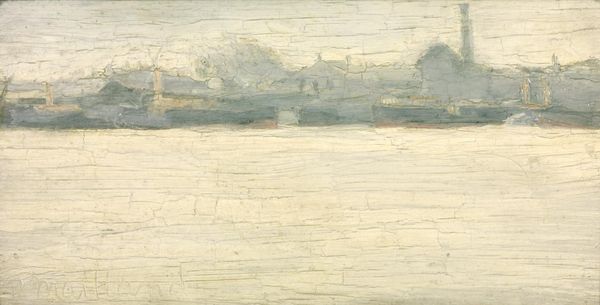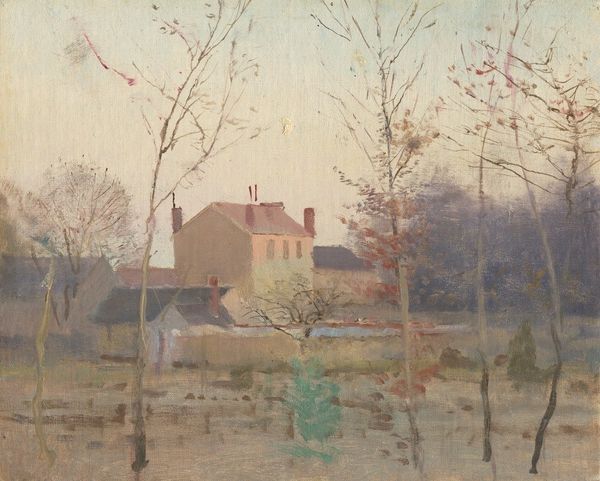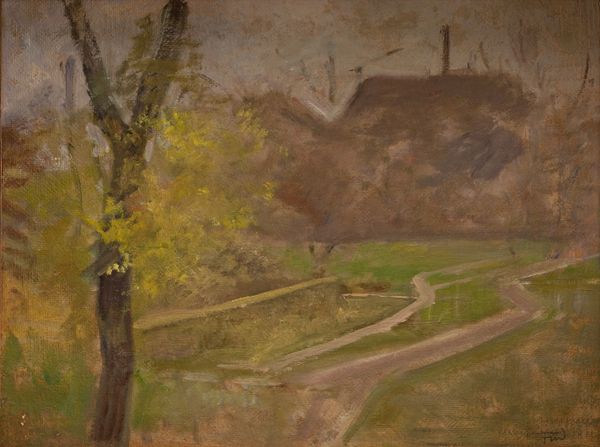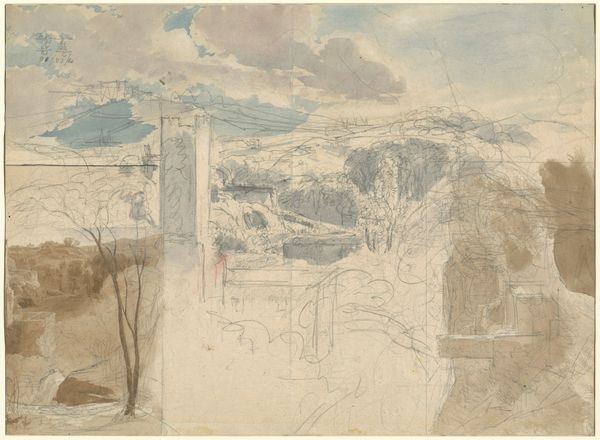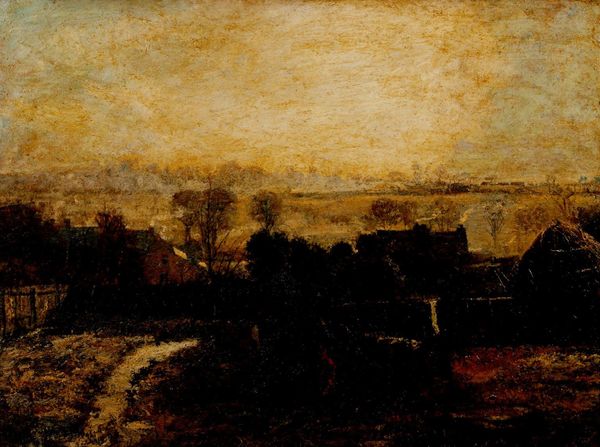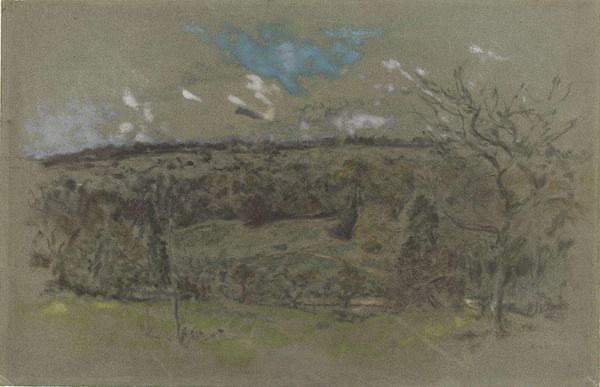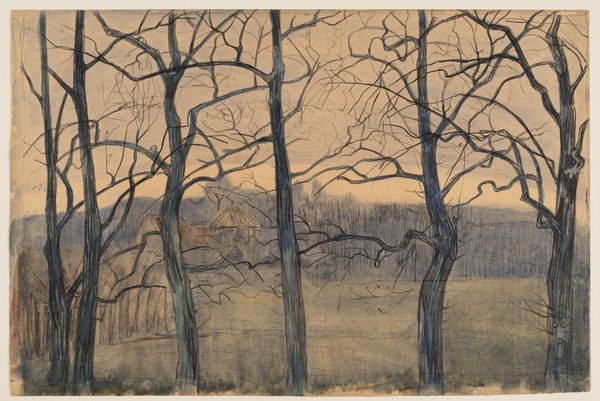
Dimensions: support: 791 x 1097 x 25 mm
Copyright: © estate of Victor Pasmore / DACS 2014 | CC-BY-NC-ND 4.0 DEED, Photo: Tate
Curator: Victor Pasmore’s, The Hanging Gardens of Hammersmith, No. 1, presents us with a dreamlike vista, rendered with delicate precision. What strikes you first about it? Editor: It evokes a sense of quietude, almost melancholy. The muted palette and bare branches suggest a moment of reflection, perhaps on urban nature or its absence. Curator: Indeed. Pasmore often explored the convergence of nature and the industrial landscape, and this piece, now in the Tate collection, captures that liminal space. The subtle use of color seems almost symbolic. Editor: Perhaps representing the fragility of our connection to the natural world amidst urban sprawl? These gardens become a metaphor for a lost Eden, hinting at environmental concerns and social inequalities in accessing green spaces. Curator: A powerful interpretation. The recurring imagery of gardens represents a yearning for harmony, a visual echo of a more balanced world. Editor: Thank you. It's left me thinking about the potential for art to ignite critical conversations on social justice and ecological sustainability. Curator: And for me, a reminder of the symbolic power of gardens, places of reflection and enduring hope.
Comments
tate 8 months ago
⋮
http://www.tate.org.uk/art/artworks/pasmore-the-hanging-gardens-of-hammersmith-no-1-t12615
Join the conversation
Join millions of artists and users on Artera today and experience the ultimate creative platform.
tate 8 months ago
⋮
This painting captures the view down to the River Thames from the artist’s garden in Hammersmith, West London. Its title also refers to the Hanging Gardens of Babylon, one of the Seven Wonders of the Ancient World. Although it is now thought the gardens never actually existed. The ruled lines visible in the painting show that the composition is based on geometric principles. These principles also formed the basis for the abstract paintings that Pasmore began to produce the following year. Gallery label, April 2019
